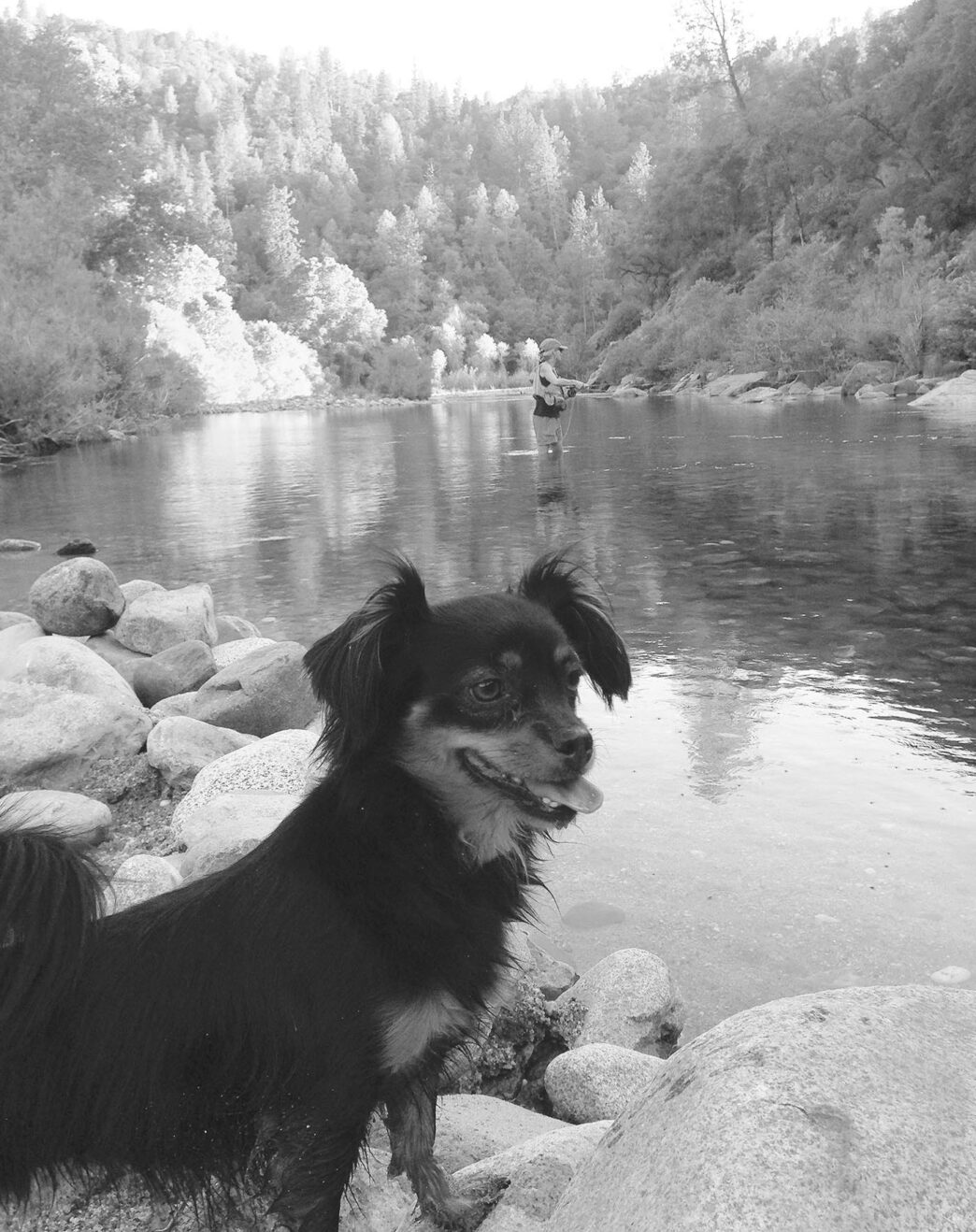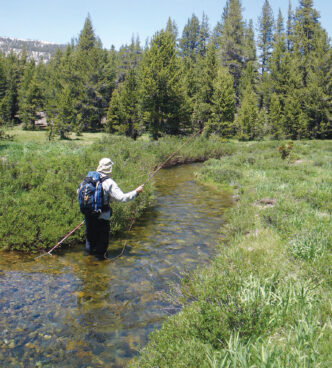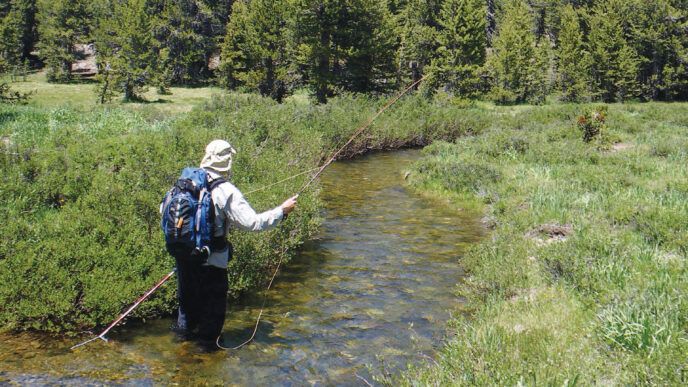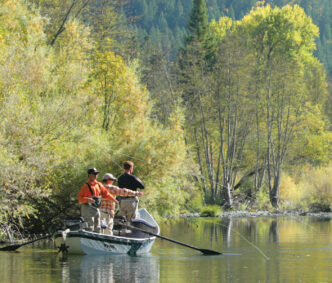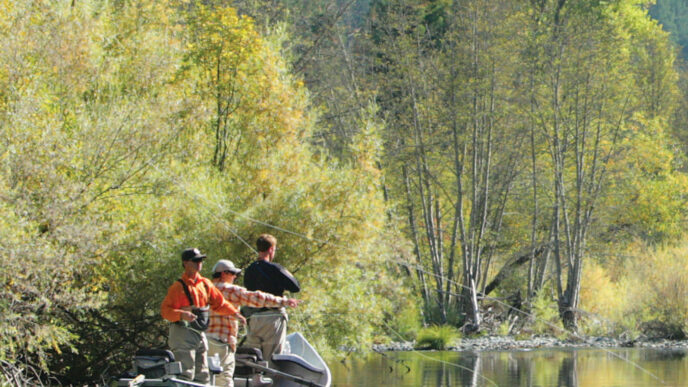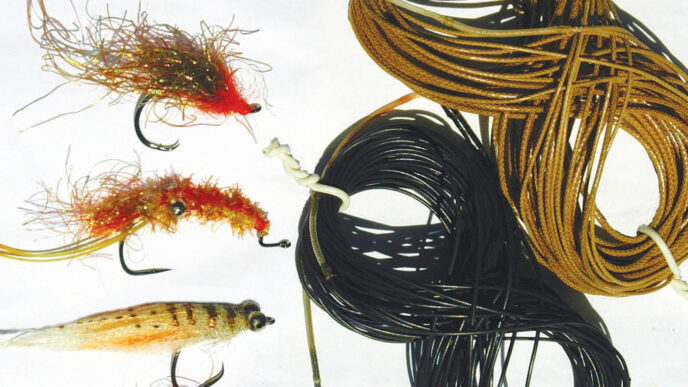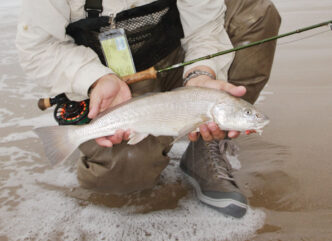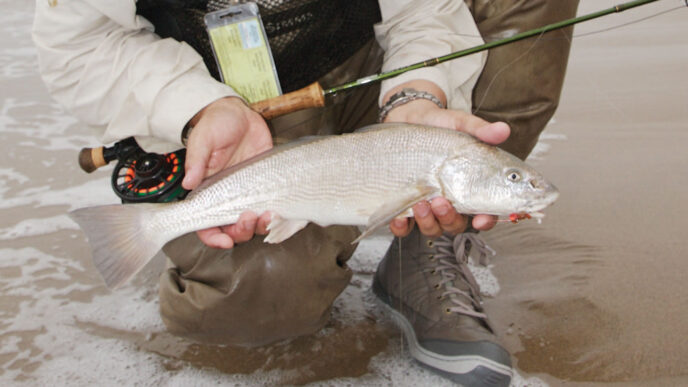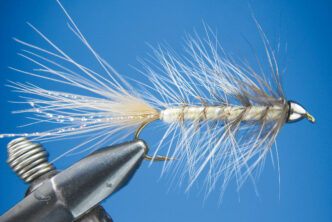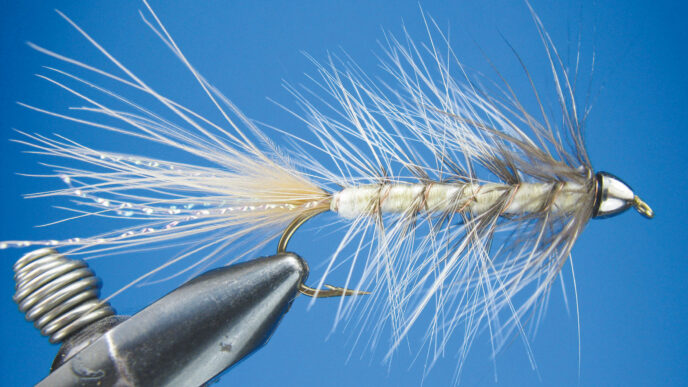The First Dog of the United States (FDOTUS) is a fishing dog. Actually, there are two, Bo and Sunny. Despite allegations by some media personalities, these are not fufu Labradoodles, but pure-to-the-bone Portuguese water dogs, built and bred to fish. They represent a long and proud lineage that played a vital role in the Mediterranean fishing scene. To the fisherman about to return home empty-handed from the North Atlantic cod fishery, having a pair of Portuguese water dogs was cause for celebration. They could turn the corner on an otherwise dismal situation and provide great promise for bringing back a heavy catch. President Obama might take note of the pedigree of the FDOTUS and rename them Hope and Change.
Portuguese water dogs were bred with webbed feet and a thick, wavy or curly coat designed to trap air, making them buoyant and protecting them from the frigid seas where their masters trolled the coasts of the British Isles. Portuguese water dogs would leap into the ocean and pull ropes between the boats of the fleet. They would fetch errant nets, gear gone overboard, and drunken anglers toppled from the deck and spilled into the dark and treacherous waters. Back in the warmer shallow waters of the Mediterranean, they would herd schools of silvery fish into their master’s nets. Many times I have dreamed of owning a dog that would herd fish to my fly or stand guard while I drink in heavy seas.
I’ve had to settle instead for a rag-tag canine menagerie that has ranged from a massive timber wolf to a trifling Chihuahua reminiscent of Yoda. All of our dogs have gone fishing many hundreds of times, but none could ever be mistaken for a pedigreed fishing dog. The closest thing we ever had to a “real” fishing dog was Tuki. (Tahoe’s Matuka Raider was her registry name, but we had her neutered as soon as possible, thus ending all that AKC nonsense.) Tuki was a black Lab with giant feet, a dense coat, and a propensity for bringing things to hand. Ducks, decoys, turtles, shoes, and even one time an oar that fell out of our pram on Milton Reservoir. She was a hero that day. On another occasion, she saved my life after I fell from a cliff on Grouse Ridge, was knocked unconscious, and awoke sometime in the night amid a snowstorm, but that has nothing to do with this story.
Tuki was born a water dog, but she also had a nose and pointing ability to rival any upland breed. She loved the smell and sound of gunfire and had a nearly magical ability to find and fetch downed birds. These traits nearly proved to be her demise. Back in the day, it was popular for “Jeepers” to descend into the canyon of a blue-ribbon trout stream, where they would then drive in the riverbed for many miles back to civilization. All of the agencies responsible for doing something about this wagged their fingers, scratched their chins, and frowned in disapproval, yet each expected the other to do something, and no one ever did. Finally, sick and tired of dealing with the bureaucracies and its bureaucrats, Lisa and I took matters into our own hands and skied into the canyon with a 50-pound case of dynamite and a pair of collapsible combi tools. We dug pits deep under the dirt road where it crossed a steep ravine and packed the holes with our charges. We taped and crimped the caps, then set a two-minute fuse that gave us plenty of time to take shelter behind a large pine some 75 yards away. It seemed safe enough.
The detonation was literally breathtaking. The concussion squeezed the air from our chests, and I thought my eardrums were going to implode. While a huge brown and gray gout gushed into the sky, Tuki streaked for the blast site. As rocks, clods, and pieces of root returned to earth, Tuki was a blur as she attempted to point at or catch each and every object that fell from above and bounced down the canyon. Her tail was wagging a mile a minute. She must have thought she had just experienced the world’s loudest shotgun blast and the corresponding slaughter of a massive covey of overgrown quail. Somehow, she managed to not get clobbered by any of the many hundreds of pounds of what used to be a roadbed. She lived to tell the tale and spent another decade enjoying the river freed from Jeeps, pointing to rising trout and giving each and every one an approving sniff should we land it.
Tuki’s sister was her polar opposite in every way. Even as a pup, Tuki maintained a certain wise and benevolent calm. Her liquid brown eyes glowered disapprovingly as baby sister Cody tore holy hell out of the neighborhood. Cody loved fishing. She would leap into the water at the slightest suggestion that there might be a trout nearby. If a fish was hooked, she would bark furiously and do her best to land it. In short, she was a pain in the ass and a menace to any angler within a quarter of a mile.
As much as she loved fishing, Cody loved fly-tying materials even more. She attacked prized saddle hackles, bucktails, and partridge skins with a singular fury. One bright and sunny day as we were driving home from town, we entered a virtual snowstorm several hundred yards from the house. White stuff was drifting everywhere. UPS had dropped off a box containing a pound of marabou feathers. A pound of marabou is a lot of feathers. Cody of course chewed open the box and apparently shook the garbage bag of feathers like a terrier with a rat. When we arrived, Cody looked accusingly at Tuki, but Cody was the one covered in feathers. A short time later, she was delivered to a friend’s ranch, where she was free to wreak havoc with relatively little impact.
After Cody got the boot, Tuki seemed lonely, so we found her a friend: a baby Rottweiler we named Karluk. Karluk was a goofy, opinionated dog who was likely the most perfect fishing dog I’ve ever known. She hated water, didn’t have the slightest interest in fish, and had no inclination to chase birds. Her idea of the perfect day was to lie down on a bed of ferns under the shade of a willow and quietly watch as we fished. When another angler might encroach on our solitude, a deep growl from something hiding in the willows was a perfect rebuke. The stubby little tail wriggling back and forth laid bare her pretense as a vicious guard dog. She was a guard dog, but “vicious” simply wasn’t in her vocabulary. As much as she disliked water, she repeatedly overcame her distaste of it to “save” our kids and their friends from drowning. If the girls got into knee-deep water, Karluk would trot down to the river, wade in, and herd the kids back to shore with solid butts of her massive shoulder.
The string of dogs since Karluk has included a three-legged chocolate Lab we took in after her owner died. Shadow never figured out she was missing a front leg, and her chin developed a permanent callous from falling on her face while trying to dig a hole or run down a hill. She loved nothing more than lying in a foot of water while we fished or picnicked on the river. I think the water soothed her stump (and chin) and lifted the weight from her surviving legs.
Lisa found an emaciated, flea-infested Gordon setter near the banks of the Little Truckee River. She nursed it back to health and made every effort to find the owners. Apparently the owners didn’t make any effort to find their dog, and after a short while, we figured out why. Little Dog, as she became known, was a wild runner who had absolutely no use for basic commands such as “come,” “sit,” or “stay.” She would spend hours chasing butterflies, catching grasshoppers, or barking at her own shadow. We gave her away several times, but each time, she somehow managed to find her way home and wriggle a little deeper into our hearts. A classic fishing dog she was not, and in fact, she wasn’t good for much except making us laugh at her antics. Any dog who can make you smile and feel happy is a good thing to keep around, even if it isn’t a fishing dog.




